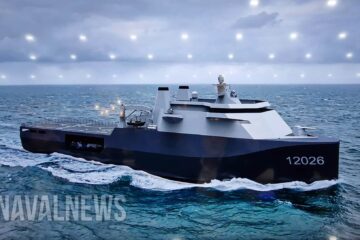Story by Staff Sgt. Brandon Esau, AFSOC Public Affairs
In partnership with the Air Force Research Lab’s Strategic Development Planning and Experimentation (AFRL-SDPE) directorate, AFSOC is developing an MC-130J Commando II Amphibious Capability (MAC) to improve the platform’s support of seaborne special operations. “The development of the MAC capability is the culmination of multiple lines of effort,” said Lt Col Josh Trantham, AFSOC Science, Systems, Technology, & Innovation (SST&I) Deputy Division Chief.
“This capability allows the Air Force to increase placement and access for infiltration, exfiltration, and personnel recovery, as well as providing enhanced logistical capabilities for future competition and conflict.“
Lt Col Josh Trantham, AFSOC Science, SST&I Deputy Division Chief
The development of a removable amphibious float modification for an MC-130J would enable “runway independent” operations, which, according to Trantham, would extend the global reach and survivability of the aircraft and Air Commandos. “Seaborne operations offer nearly unlimited water landing zones providing significant flexibility for the Joint Force,” Trantham said.
Utilizing the MAC capability may provide unlimited operational access to waterways to distribute forces if land assets are compromised.
“MAC is vital to future success because it will allow for the dispersal of assets within a Joint Operations Area,” said Maj Kristen Cepak, AFSOC Technology Transition Branch Chief. “This diaspora complicates targeting of the aircraft by our adversaries and limits aircraft vulnerability at fixed locations.”
A task force of industry partners are closely collaborating with AFSOC and AFRL-SDPE to bring the vision to life. A five-phase rapid prototyping schedule will lead to an operational capability demonstration in only 17 months while de-risking the concept for a future potential MAC program of record that could field MAC for MC-130Js but also potentially field a similar amphibious capability for other C-130 variants with only minor variations.

AFSOC and private sector counterparts are currently testing MAC prototypes through digital design, virtual reality modeling (VR), and computer-aided designs (CAD) in a virtual setting known as the Digital Proving Ground (DPG), paving the way for digital simulation, testing, and the use of advanced manufacturing for rapid prototyping and physical prototype testing.
According to Trantham and Cepak, the DPG can deliver mission review, aircraft system analysis, design ideation, engineering risk-reduction, virtual reality, concept imagery, feasibility studies, and other deliverables.
“Being able to experiment with existing technology to evaluate design tradeoffs and test a new system before ever bending metal is a game-changer,” Cepak said. “AFSOC is evolving and experimenting in a smart way to reduce technical risk and deliver capability to the field more rapidly and efficiently than before.“
According to Trantham, while the MAC project demonstrates rapid capability development for AFSOC, the Air Force and the Total Force will also benefit.
“We believe MAC will be able to be used by our sister services, allies, and partners on various C-130 platforms,” he said. “Further, expanding the operational use of an amphibious aircraft alongside other innovative tools will provide even more complex dilemmas in future battlespaces for our strategic competitors.”






